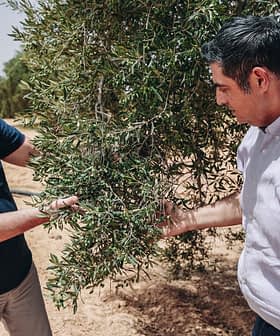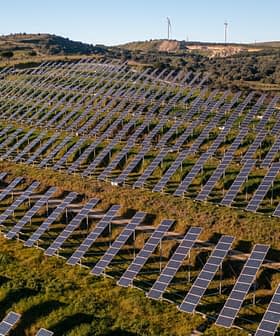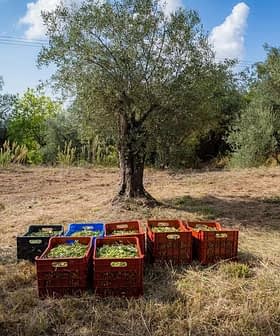How the El Niño Will Affect Olive Growers
El Niño years increase the likelihood of above-average precipitation in the Americas and below-average precipitation in Australia and South Africa.
After an incredibly unusual three years of the climatic phenomenon known as La Niña, meteorologists predict that there is about an 80 percent chance of El Niño developing by September or October.
The two phases of El Niño-Southern Oscillation (ENSO) profoundly impact the global climate, including the world’s most productive olive-growing regions outside the Mediterranean.
El Niño boosts the odds of having new records in global mean temperature. It doesn’t mean that it’s a foregone conclusion, but certainly the last big El Niño did help boost global mean temperatures, and we saw records.
The shift from La Niña to El Niño increases the probability of higher-than-average rainfall in California, Chile, southern Brazil and Uruguay while increasing the probability of drought in Australia and South Africa.
The development of El Niño does not directly impact the Mediterranean basin, which is responsible for 96 percent of global olive oil production but is associated with higher-than-average global temperatures.
See Also:Drought Expected to Hit Europe Again, Scientists WarnMichelle L’Heureux, an ENSO specialist at the National Oceanic and Atmospheric Administration (NOAA), told Olive Oil Times that the amount of heat stored within the tropical Pacific Ocean has increased in recent months, one of the necessary conditions for the development of El Niño.
“El Niño, to the first order, is a warming of the tropical Pacific Ocean at the surface,” she said. “When it starts warming in the east-central Pacific, that can also start changing the pattern of winds and the pattern of tropical rainfall. When that all happens, then we have El Niño.”
The build-up of heat in the east-central Pacific creates a phenomenon known as a Kelvin wave, where the built-up heat shifts from west to east along the equator, warming the eastern Pacific.
Another indicator that El Niño will likely evolve ahead of the olive harvest in the Northern Hemisphere is the development of westerly wind anomalies responsible for changing precipitation patterns throughout the Pacific Ocean.
“Typically in the equatorial Pacific, the winds blow from east to west, and with El Niño, the winds reverse,” L’Heureux said. “When the westerly winds start, they help push more warm water to the east, we get more ocean Kelvin waves and plant the seeds of El Niño.”
While it is difficult to attribute any single climatic event to ENSO, El Niño years tend to be hotter than the global average.
“El Niño boosts the odds of having new records in global mean temperature,” L’Heureux said. “It doesn’t mean that it’s a foregone conclusion, but certainly the last big El Niño did help boost global mean temperatures, and we saw records.”
“So I think there is a legitimate concern that this year, we potentially have an El Niño developing that we could also rival the global mean temperature records that we saw in 2015/16,” she added.
After a year in which hot and dry weather severely impacted the olive harvest across much of the western Mediterranean basin, the news of new record highs will cause concern among olive growers.
Scorching temperatures in March and April in southern Spain, the world’s most productive olive-growing region, have already jeopardized the coming harvest. The potential for the phenomenon to continue will keep pressure on supply and prices, which are already at record highs.
While El Niño is associated with above-average global temperatures, the shift in rain patterns may provide some relief for olive growers outside of the Mediterranean.
Olive trees are quite drought resistant, but they need rain during critical development moments to spur oil accumulation. Generally, precipitation in the autumn and spring is welcomed by olive growers. However, too little rain causes trees to abandon olive development to conserve water for other vital functions.
El Niño years are generally associated with cooler weather and wetter winters across the southern United States. According to the NOAA, El Niño increases the likelihood of precipitation in California from January to April.
While the news of its development will likely bring relief to many California olive growers – some of whom experienced significant production declines in the 2022/23 crop year due to the state’s severe drought – L’Heureux said the development of El Niño does not guarantee wetter winters in the state responsible for virtually all U.S. olive oil production.
Meanwhile, the development of El Niño has olive growers in Chile (the second-largest olive oil-producing country in the Americas), southern Brazil and Uruguay hoping for an end to the region’s unprecedented drought, which climate researchers say has been exacerbated by La Niña.
“La Niña has been the main driver of the southern South America drought in recent years,” Leandro Díaz, an atmospheric science researcher at the University of Buenos Aires, told Olive Oil Times.
“La Niña generated the predominance of high-pressure conditions in the region that are associated with low precipitation,” he added. “More research is needed to fully understand the role of other factors, such as climate change, but undoubtedly La Niña is the main cause for the drought.”
According to the NOAA, El Niño increases the likelihood of rainfall in central Chile from June to September, crucial moments in olive development. The phenomenon also increases the chance of wetter weather in Uruguay and southern Brazil from September to January.
However, Díaz said the association between El Niño and increased precipitation in western Argentina, the largest olive oil-producing region outside of the Mediterranean basin, is unclear.
“Therefore, the impact on that region is much more uncertain,” he said. ”Whether it has any effect will depend on how this particular event alters the atmospheric circulation over South America.”
While El Niño increases the likelihood of above-average precipitation in the Southern Cone, Díaz warned that the preceding drought has been so severe that wetter weather cannot reverse some of its devastating impacts.
“The drought of the last few years has been extremely severe in some regions, so they will need a large amount of rain to recover the previous soil conditions,” he said. “Although we have a high probability El Niño forecast at this time, it is difficult to determine precisely how much rain we can expect.”
“This has a greater uncertainty and is highly dependent on the region, the intensity of the event, and how it may interact with other climate variability patterns affecting the region,” Díaz added.
While the development of El Niño may bring reprieve to some of the world’s drought-enduring olive farmers, the climate phenomenon portends drier conditions for others.
El Niño years are associated with hotter and drier weather in Australia and South Africa. Consequently, the phenomenon likely exacerbated the historic droughts in both countries in 2017 and 2018.
“Although most major Australian droughts have been associated with El Niño, analysis of past El Niño events shows that widespread drought does not occur with every event, and the strength of an El Niño is not directly proportional to the rainfall impacts,” Michael Conway, a meteorologist at the Australian Bureau of Meteorology, told Olive Oil Times.
He added that Australia’s wet La Niña had increased the available water stored nationwide. This may help buffer the effects of potential drought.
“Having three years of mostly La Niña phases of ENSO has increased the accessible volume of Australia’s main water storages since the low rainfall year for most of Australia of 2019,” he said. Available water has increased by 82 percent from January 2020 to February 2023.
While the likelihood of El Niño developing has increased recently, L’Heureux said March to May is a notoriously difficult time to forecast, and meteorologists would have a clearer picture later in the year.








